Do you know how to grow from seeds? It’s something we all think we can do but when it comes to it, we can lack confidence to try. We might pick up a seed packet, read the back with a furrowed brow, possibly put them back again or, worse still, buy them but never sow the seed.
You can buy garden ready plants from garden centres or mail order but if you learn hoe to grow from seed there are thousands more varieties to choose from. Plus its cheap. Best of all there is real magic in seed germination.
If you’re one of these people and are looking for a no fuss demystification of the magic that is seed sowing – read on.
Read your seed packet and work out how to achieve this in your own context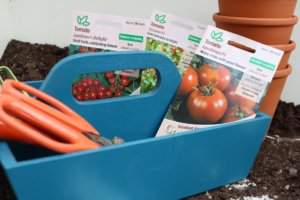
Most seed packets give you the basic information you need to grow from seed. They will tell you when to sow, ideal germination temperature, how to grow on and when you can expect flowers or harvest. The detail varies from brand to brand and can be minimal or diagrammatic in some internationally traded brands.
It’s easy to be put off by the detail (or sometimes lack of detail) on a seed packet but read this and you’ll begin to understand what your plant needs. You can then think about how you can provide this in the context of your own home. Not everyone has a greenhouse, or propagator but given a bit of thought, anyone can grow all but the tricksiest of seeds.
What does this seed packet tell us?
Here’s a seed packet which I have annotated to show how to grow this tomato from seed. There’s allot of information but if you learn to read a seed packet carefully, you’ll have great success growing from seed.
If you are finding this difficult to read, click on it and it will open up larger on your screen…
What kit will I need to grow from seed?
The answer to this is very little. Garden centres and online catalogues abound with seed sowing kit. All of this has a purpose which can be useful in some circumstances but isn’t essential.
My essential kit for seed sowing
- Seed trays or pots – I like sowing in trays – they give space to the seedlings, giving them air and light which will make them grow strongly and avoid problems with fungal infections. As well as standard sized trays, I have also bought some small ones – to use when I don’t want to sow many of a certain seed. Bigger seeds such as peas, beans or squash can be planted in individual pots. To avoid buying single use plastics, it’s worth paying up for thick plastic seed trays that will last a lifetime. For larger seeds instead of buying individual plastic pots you could use coir pots or cardboard tubes or store and reuse old plastic pots from plants you have bought.
- Compost – you can buy special seed compost which is lower in nutrients than other composts and is usually soil based and has a fine texture. However, multi-purpose compost does what it says on the bag – it can be used for many plants and certainly most seeds. If you haven’t got the desire to but lots of types of compost – or more likely – haven’t the room to store them, buy multipurpose.
- Little sieve – these are cheap but invaluable. Modern multipurpose compost can contain chunky lumps. These are fine in a pot of bedding plants but sieving these out provides a lovely base for the new seedlings to run their roots through. You can also use the sieve to cover your seeds in a fine layer. You can also buy a light granular substance called vermiculite for this but that’s another bag to store somewhere. If you see vermiculite suggested to cover your seeds, you can usually substitute sieved compost.
- Labels – if you’re sowing a few packets you WILL forget which is which even if you think you won’t. Use any way of labelling that works for you but do try and do this.
- A light place – some seeds need light to germinate, some don’t but ALL need good light to grow strongly without getting leggy. You’ll need a light place inside, protected from cold, for some seeds and also one out in your garden, balcony or wherever you’re growing your seedlings.
How to sow
First decide how many seeds you want to sow. The packet of Lizzano tomatoes has 25 seeds in it but few of us have the room or appetite for 25 tomato plants. Think about how many plants you want – say 3, then sow that number plus a few extra in case they don’t all germinate.
Next, knowing how many seeds you’ll be sowing, choose your pots or trays. Only with large seeds such a beans, peas and squash do I sow in individual pots. Otherwise I sow in a seed tray or plastic pot, a small one if I’ve only a few seeds I want to sow, a bigger one if I want more.
Fill your seed tray with sieved compost then gently pat down and smooth off the surface. Open your packet and using your fingers pinch and spread the seeds evenly across the surface. You can sow in an even pattern if you want as this will help you to see where germination has failed. For small seeds this isn’t easy so I don’t bother unless seeds are easy to handle.
Cover the seeds with a light sprinkling of sieved compost. Some packets will tell you NOT to cover the seed (for example snapdragons) as these require light to germinate well but if the packet is not explicit, then I always cover the seeds. LABEL you seeds whichever way suits – you will forget what you have planted – especially if you have a few packets to sow.
The seeds will need moist compost to germinate. You could water in with a watering can with a fine rose but try to avoid any strong flow from the can as this will move the seeds around. For ease, I usually stand my seed trays in a deep dish or tray of water which slowly gets drawn up into the compost and doesn’t disturb the seeds. This takes 15-20 minutes and you can tell when the water reaches the top as the compost darkens on the surface. Then take the tray out, let it drain for a short while and place it where you want it to germinate – indoors or in a greenhouse or propagator if it needs warmer temperatures, outdoors if not.
Wait for germination
Seed packets usually say how quickly germination will occur but not always. Tomatoes can take as little as 4 days if the conditions are right but some seeds can take months. If you’re not sure it’s worth trying to find out as it is easy to give up on a seed tray, thinking nothing is happening when in fact it just needs your care for a bit longer.
What next for your seedlings – click here to read more about pricking out and growing on. Article contains a you tube clip and step-by-step photos on pricking out your seedlings from their seed tray.
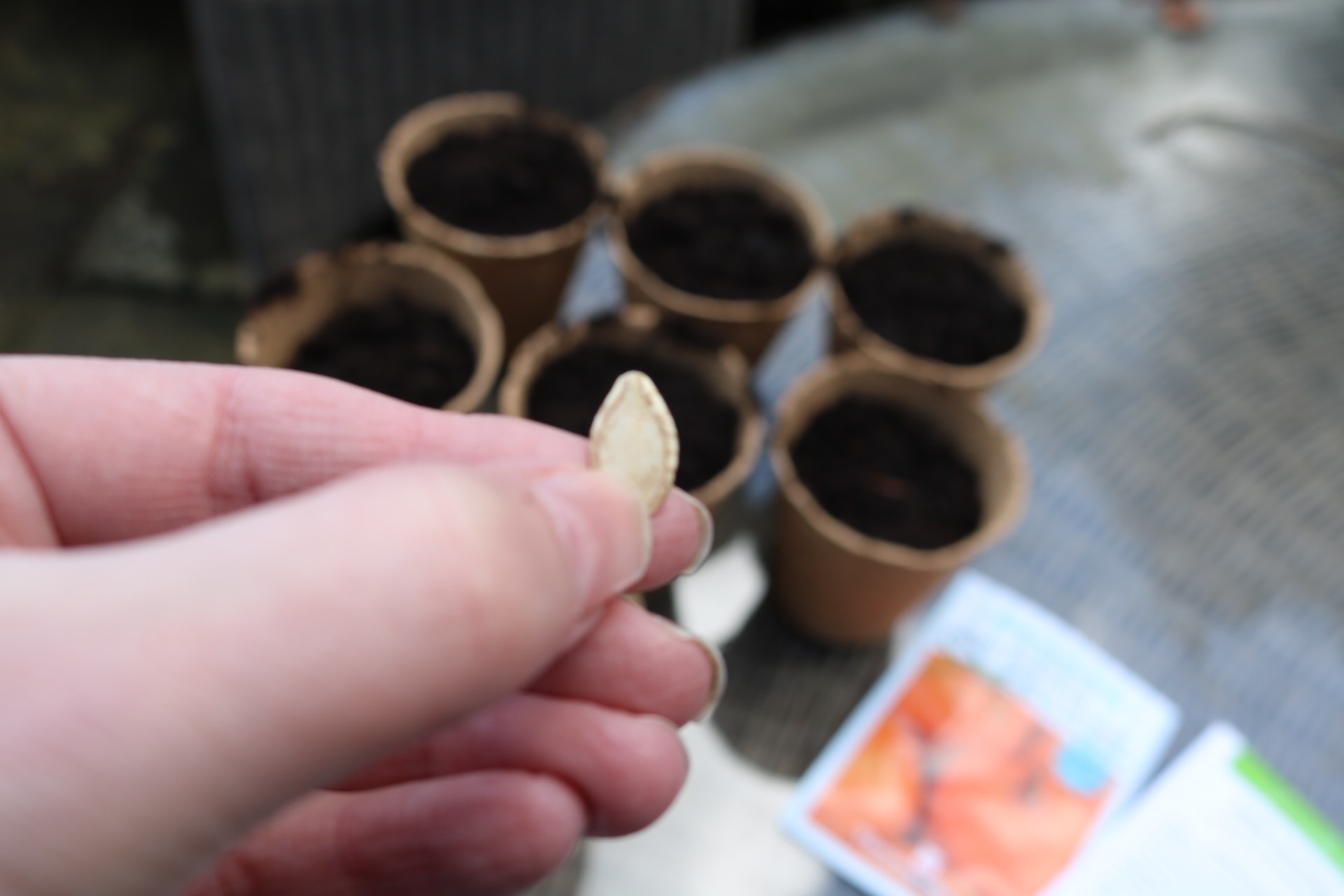
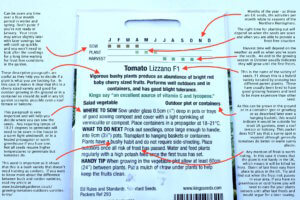
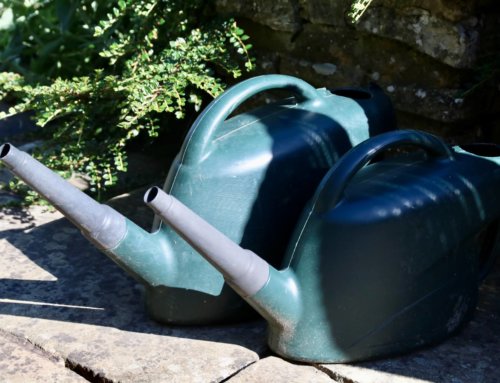
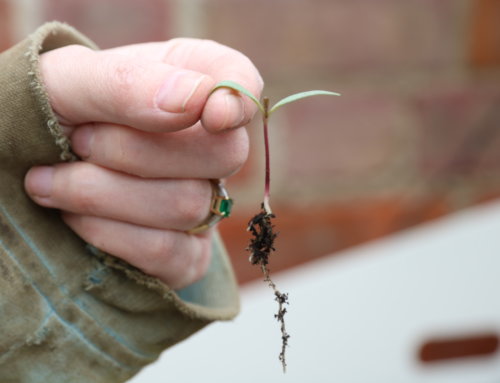
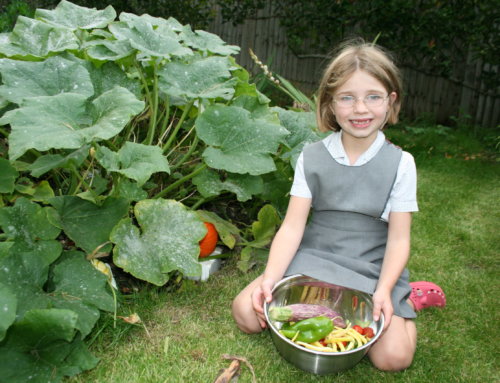
Good knowledge about seeing thanks
Finally, an article that convinced a beginner to start seeds!
Thanks for that lovely message – I want people just to give it a try.
These tips certainly take the angst out of having a go!
Thanks Julie, I’m glad you found it helpful. Gardening really is a case of trial and error but the things that go right are the things that spur us on to keep trying. I’ve had so many things go wrong in the past!